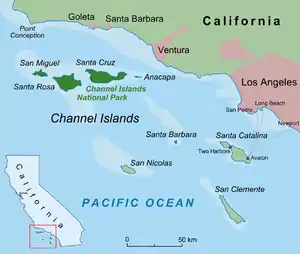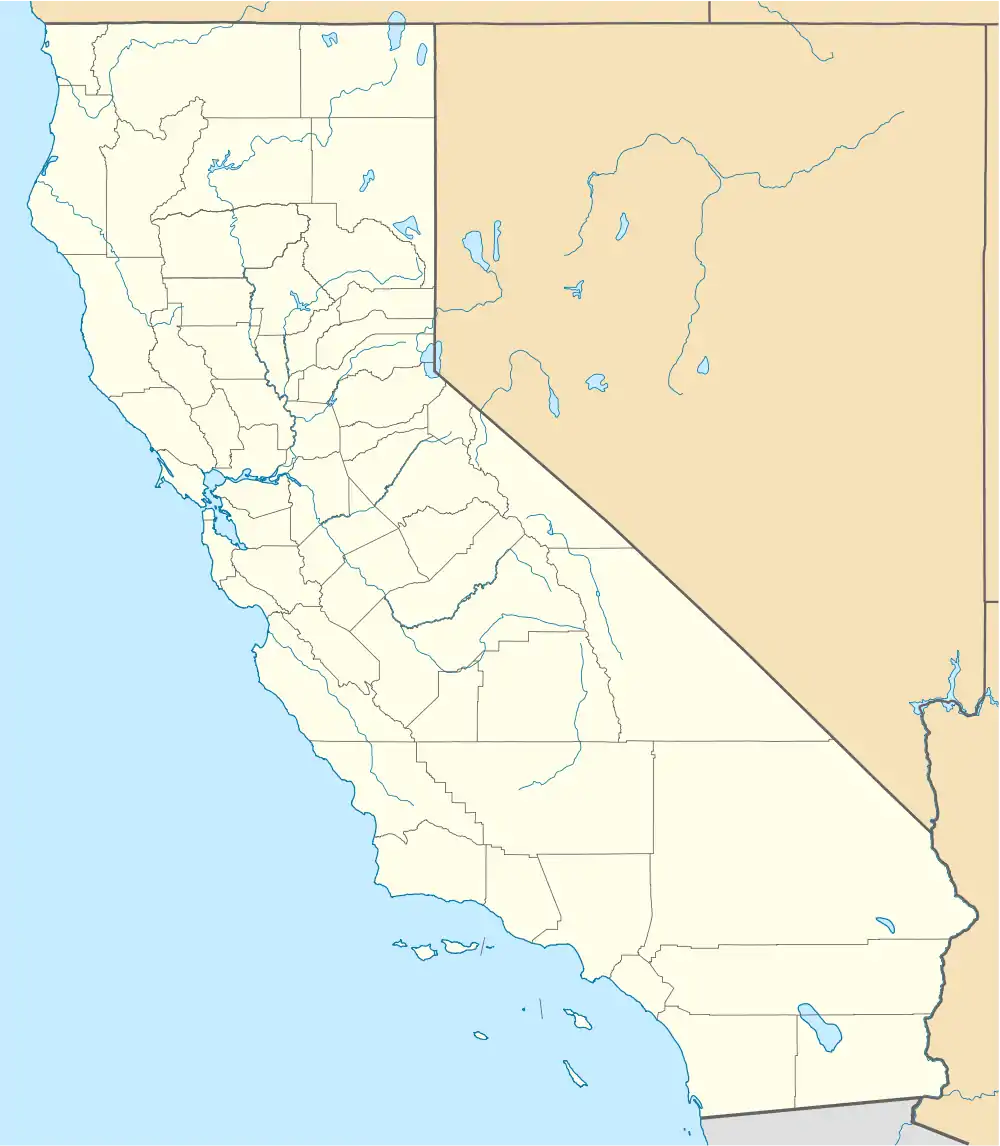 Begg Rock Begg Rock (California)  Begg Rock Begg Rock (California) | |
| Geography | |
|---|---|
| Location | Ventura County California Pacific |
| Coordinates | 33°21′43″N 119°41′42″W / 33.362°N 119.695°W |
| Archipelago | Channel Islands of California |
| Highest point | not named |
| Administration | |
United States | |
| Demographics | |
| Population | 0 |
Begg Rock, has an elevation of 15 feet (4.6 m) above sea level, located 8.8 miles (14.2 km) northwest of Vizcaino Point, the west point of San Nicolas Island, Ventura County, California,[1] United States. It has an area of 656.6 Square Feet (61 square meters).[2] This island rises abruptly from depths of 50 fathoms (300 ft; 91 m).[3] A reef extends north and south of the island over 100 yards (91 m) in each direction.[4] A lighted whistle buoy is 500 yards (460 m) north of the rock.[5] This rock may be found on NOAA chart 18755.[6] This rock was given its name by the Coast Survey.[7] It was named for the boat, John Begg, which struck a nearby rock in 1824.[8] Begg Rock State Marine Reserve surrounds the rock.
Begg Rock is most famous to scuba divers as an exotic, beautiful, and challenging dive location that provides opportunities for excellent photography. It extends almost vertically down from above the surface. It has several pinnacles, a couple of which are always above water and a couple that are only exposed at low tide. The vertical walls of the rock are covered in filter-feeding organisms such as mussels, green anemones, and pisaster starfish. Below 40 feet (12 meters) are large areas of brilliantly colored Corynactus anemones. Past about 70 feet (21 Meters) are patches of delicate white Metridium anemones. The site used to be famous for large rock scallops, which were depleted by hunters. However, Begg Rock is currently a no-take zone. Diving past 120 feet (36.6 meters) shows a cold, dark, exotic world. This is an advanced and deep dive site that presents extreme hazards to divers and tourists.
See also
Footnotes
- ↑ US Dept of Commerce (1997). United States Coast Pilot 7 Pacific Coast: California, Oregon, Washington, and Hawaii. 31st edition. Washington DC: NOAA.
- ↑ gauged from online photographs, based on known height
- ↑ US Dept of Commerce (1997). United States Coast Pilot 7 Pacific Coast: California, Oregon, Washington, and Hawaii. 31st edition. Washington DC: NOAA.
- ↑ US Dept of Commerce (1997). United States Coast Pilot 7 Pacific Coast: California, Oregon, Washington, and Hawaii. 31st edition. Washington DC: NOAA.
- ↑ US Dept of Commerce (1997). United States Coast Pilot 7 Pacific Coast: California, Oregon, Washington, and Hawaii. 31st edition. Washington DC: NOAA.
- ↑ US Dept of Commerce (1997). United States Coast Pilot 7 Pacific Coast: California, Oregon, Washington, and Hawaii. 31st edition. Washington DC: NOAA.
- ↑ Erwin G. Gudde, William Bright (2004). California Place Names: The Origin and Etymology of Current Geographical Names.
- ↑ Erwin G. Gudde, William Bright (2004). California Place Names: The Origin and Etymology of Current Geographical Names.
References
- US Dept of Commerce (1997). United States Coast Pilot 7 Pacific Coast: California, Oregon, Washington, and Hawaii. 31st edition. Washington DC: NOAA.
- Gudde, Erwin Gustav and William Bright (2004). California Place Names: The Origin and Etymology of Current Geographical Names. Berkeley and Los Angeles, California: University of California Press.